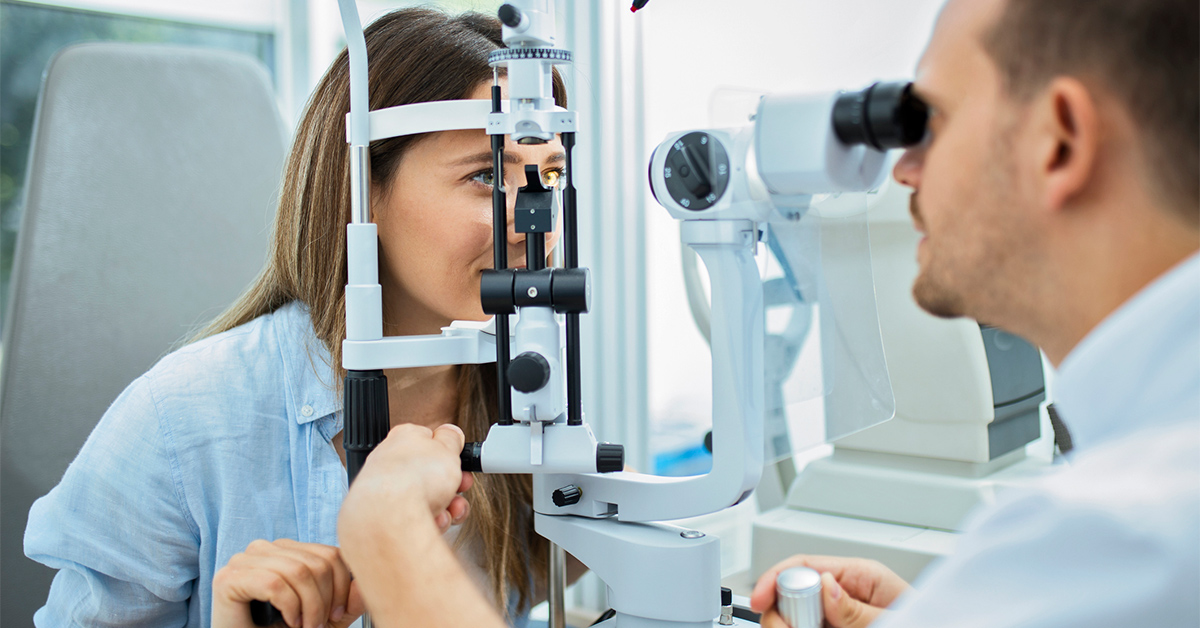Discovering the most up to date Technical Improvements in Optometry and What They Mean for Optometrists
In the ever-evolving area of optometry, recent technical advancements are improving exactly how professionals come close to eye care. From the precision of Optical Comprehensibility Tomography to the nuanced insights supplied by AI-driven analysis devices, these innovations are setting new criteria in client analysis and treatment. Teleoptometry is poised to redefine ease of access, making sure that expertise goes beyond geographical restrictions. As these developments penetrate the practice, optometrists are faced with the difficulty of welcoming these devices to enhance individual results. The concern stays: how will these technological changes redefine the roles and duties within the occupation?
Technologies in Diagnostic Devices
Progressing the field of optometry, advancements in diagnostic devices have changed the means eye treatment specialists analyze and detect aesthetic impairments and ocular conditions. The previous years has witnessed significant technical advancements, allowing more precise and extensive analyses.
An additional secret advancement is the intro of sophisticated corneal topography systems, which map the surface curvature of the cornea with accuracy. These tools are particularly helpful for fitting get in touch with lenses and identifying corneal problems. Additionally, digital retinal imaging has changed standard ophthalmoscopy, providing thorough, panoramic views of the retina that facilitate comprehensive aesthetic exams.
The growth of wavefront aberrometry has also been important, allowing the evaluation of refractive errors with unparalleled precision (Opticore Optometry). This technology assists in customizing corrective lenses and improving surgical results for refractive surgical procedures. Jointly, these diagnostic improvements empower eye doctors to deliver superior patient treatment, ensuring very early intervention and customized treatment approaches, eventually improving visual wellness end results
AI in Individual Monitoring
Structure on the foundation of cutting-edge diagnostic tools, the unification of artificial knowledge (AI) in individual management represents a transformative jump for optometry. AI systems are significantly used to enhance performance, accuracy, and customization in individual treatment. By examining large amounts of information, AI can identify patterns and predict potential eye conditions, enabling eye doctors to tailor treatments a lot more properly. This capability is crucial in handling persistent eye conditions such as glaucoma and diabetic retinopathy, where early detection and continual tracking are vital.
In addition, AI-driven systems facilitate structured person communications and management procedures. Automated scheduling, digital consultations, and individualized follow-up strategies not only boost client complete satisfaction but likewise optimize time administration for specialists. These systems can triage clients based on the seriousness of their problems, guaranteeing that those in crucial need receive punctual interest.
In addition, AI boosts decision-making by offering optometrists with evidence-based referrals and therapy paths. By integrating data from electronic wellness records, AI tools use understandings that notify medical decisions, lowering the risk of errors and enhancing individual outcomes. As AI remains to progress, its role in client monitoring will likely expand, reshaping the landscape of optometric care.
Advances in Retinal Imaging
In the world of optometry, retinal imaging has experienced exceptional technical innovations that are improving diagnostic capacities and individual treatment. Innovations such as Optical Coherence Tomography (OCT) and fundus photography have reinvented exactly Full Report how optometrists envision and assess the retina. OCT, particularly, offers high-resolution, cross-sectional pictures of the retina, anchor enabling the in-depth evaluation of its layers. This capability is invaluable for very early discovery and administration of conditions like glaucoma, diabetic person retinopathy, and age-related macular deterioration.
Enhanced imaging modalities like OCT angiography are more refining diagnostic precision. Eye Doctor. Such advancements promote the recognition of min retinal modifications that can signify disease development.
In addition, innovations in expert system are increasing retinal imaging by enabling automated analysis of huge datasets. These systems aid optometrists in recognizing patterns a sign of pathology, therefore enhancing diagnostic accuracy and effectiveness. Collectively, these advancements are transforming retinal imaging into a keystone of contemporary eye treatment, enhancing end results and increasing healing opportunities.
Teleoptometry's Growing Function
Teleoptometry is progressively becoming an important component of eye treatment, driven by innovations in digital interaction and diagnostic devices. This is specifically beneficial in underserved and country areas where accessibility to specialized eye care is frequently limited.
The assimilation of expert system (AI) further improves teleoptometry, allowing the analysis of visual information and assisting in the discovery of ocular problems such as glaucoma and diabetic person retinopathy. AI-powered formulas can rapidly translate complex imaging data, providing optometrists with valuable understandings that strengthen medical decision-making.
Moreover, teleoptometry sustains connection of care via smooth integration with electronic wellness documents (EHRs), permitting optometrists to preserve comprehensive individual histories. When seeking advice from with various experts., this makes certain that people get regular and personalized treatment even.
Regardless of these benefits, challenges continue to be, consisting of making certain data safety and handling client assumptions. Nevertheless, teleoptometry stands for a substantial stride in the direction of even more easily accessible, reliable, and patient-centered eye care. As modern technology evolves, its role is positioned to expand better.

Future Trends in Eye Treatment
A myriad of innovative patterns is set to reshape the future of eye treatment, driven by technological innovations and the progressing needs of clients. One significant pattern is the combination of expert system (AI) in diagnostics, which guarantees to enhance the precision and performance of eye examinations. AI formulas can assess large quantities of information from retinal images, potentially detecting problems like diabetic person retinopathy and glaucoma earlier than standard approaches.
Furthermore, personalized medicine is getting traction in optometry, with genetic testing educating tailored treatment strategies. This strategy intends to optimize client end results by tailoring treatments to private genetic profiles. Wearable technology, such as clever call lenses, is additionally coming up, supplying real-time tracking of intraocular stress or sugar degrees, hence giving continuous insights into ocular and systemic health and wellness.
The adoption of increased truth (AR) and online truth (VIRTUAL REALITY) in training and patient education and learning is an additional arising trend. These innovations Homepage provide immersive experiences that can improve understanding and skills both for optometrists and people. As these patterns progress, optometrists have to remain abreast of technical improvements to offer cutting-edge care, making certain enhanced client end results and contentment in the vibrant landscape of eye treatment.
Final Thought

Collectively, these analysis innovations encourage eye doctors to deliver exceptional individual treatment, making certain early intervention and customized therapy methods, ultimately improving aesthetic health results.

As these technologies continue to develop, eye doctors must adapt and incorporate them right into technique, ultimately optimizing process efficiency and elevating the requirement of eye treatment supplied to patients.